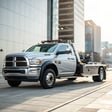The evolution of mobility aids has taken a dramatic leap forward. Today's smart rollators combine cutting-edge technology with practical design to help seniors maintain their independence longer.
How Modern Rollator Design Is Changing Senior Lives
Traditional walkers and rollators have served seniors well for decades, but they've always had limitations. The best rollator for seniors today isn't just about physical support—it's about comprehensive assistance that addresses multiple needs.
Modern rollator design has evolved to include ergonomic handles, adjustable heights, and lightweight yet durable frames. These improvements make a significant difference in daily usability. As noted in recent geriatric mobility studies, proper ergonomics can reduce strain on joints and prevent secondary injuries that often occur with poorly designed mobility aids.
The aesthetic aspect shouldn't be overlooked either. Today's rollators come in various styles and colors, moving away from the clinical appearance that made many seniors reluctant to use them. This shift toward stylish, non-stigmatizing designs has increased adoption rates among image-conscious seniors.
Advanced Rollator Features That Matter Most
When shopping for a smart mobility device, several advanced rollator features stand out as particularly valuable:
Intelligent Braking Systems
Unlike basic models, smart rollators incorporate pressure-sensitive braking that automatically engages when the user leans heavily on the device or when it detects downhill movement. This rollator safety technology significantly reduces fall risk—still the number one cause of injury among seniors.
Navigation and Location Services
Some models now include GPS capabilities, allowing family members to locate their loved ones if they wander or become disoriented. This feature provides peace of mind for families caring for seniors with cognitive impairments.
Health Monitoring Integration
A rollator with sensors can track vital health metrics like:
- Walking distance and speed
- Rest frequency
- Heart rate during mobility
- Fall detection and emergency alerts
These metrics can be shared with healthcare providers to monitor mobility changes that might indicate health concerns.
Tech for Senior Mobility: What's Worth the Investment?
Not all tech features justify their cost. When evaluating mobility aid with tech enhancements, consider which functions actually improve quality of life versus those that might go unused.
The most valuable technologies address specific challenges seniors face. For example, the UPWalker Smart, which retails for around $695, includes an upright design that improves posture while walking. This seemingly simple innovation reduces back and joint pain by distributing weight more naturally than traditional bent-over walker positions.
Another worthy investment is terrain-adaptive wheels. These smart wheels automatically adjust tension and resistance based on the surface, making transitions from carpet to tile or outdoor paths much smoother. This technology prevents the sudden jerking motion that can throw seniors off balance when moving between different surfaces.
What's the Best Rollator for Seniors with Different Needs?
There's no one-size-fits-all answer when it comes to senior walking aid innovation. The right choice depends on specific mobility challenges, living environment, and lifestyle.
For active seniors who still enjoy outdoor activities, the Rollz Motion Performance with all-terrain wheels and shock absorbers provides stability on uneven surfaces. Its conversion feature from rollator to transport chair makes it versatile for varying energy levels throughout the day.
For those prioritizing indoor maneuverability, the Nitro Elite's narrow turning radius excels in navigating tight spaces like bathrooms and narrow hallways—often the most challenging areas for mobility device users.
Seniors with cognitive impairments benefit most from models with built-in reminders and simplified controls. The Triumph Mobility Escape offers intuitive operation with minimal buttons and clear visual cues.
How Are Smart Rollators Improving Financial Outcomes for Seniors?
While smart rollators represent a higher initial investment than basic models, they offer potential long-term financial benefits worth considering.
The advanced fall prevention features in today's rollator safety technology can significantly reduce healthcare costs. According to the CDC, the average hospital cost for a fall injury is over $30,000. By preventing even one serious fall, a smart rollator can essentially pay for itself many times over.
Additionally, the independence provided by these devices often delays the need for costly in-home care or assisted living. When seniors can safely navigate their homes and communities, they maintain self-sufficiency longer—a benefit that's both financial and psychological.
Some Medicare Advantage plans and long-term care insurance policies now cover part of the cost of these advanced devices, recognizing their preventative health benefits. It's worth consulting with insurance providers about potential coverage options.
Smart Mobility Device Integration with Home Systems
The most forward-thinking aspect of smart rollator independence is how these devices are beginning to integrate with smart home systems. When mobility aids communicate with home automation, new possibilities emerge:
- Automatic door opening when the rollator approaches
- Lighting paths activated by rollator movement
- Adjusting counter and table heights when the rollator is nearby
- Emergency systems that activate based on unusual movement patterns
This integration represents the future of aging-in-place technology, creating environments that adapt to seniors rather than forcing seniors to adapt to static environments.
Why Is Rollator With Sensors Technology Becoming Essential?
The data collection capabilities of smart rollators provide invaluable insights for both users and healthcare providers. These devices can detect subtle changes in gait, speed, and usage patterns that might indicate developing health problems before they become serious.
For example, a gradual slowdown in walking speed or increase in stopping frequency might signal anything from medication side effects to early heart failure symptoms. This early detection capability transforms rollators from passive support devices to active health monitoring tools.
The predictive capabilities continue to improve as artificial intelligence analyzes more user data. Some systems can now predict likely fall scenarios based on movement patterns and proactively suggest interventions.
What Questions Should You Ask Before Investing in Tech for Senior Mobility?
Before purchasing a smart rollator, consider these essential questions:
- Does the technology address specific mobility challenges your loved one faces?
- Is the interface intuitive enough for someone who may not be tech-savvy?
- What is the battery life, and how is it recharged?
- Are replacement parts readily available if something breaks?
- Does the company offer technical support specifically designed for seniors?
- Is the data collected secure and private?
- Can the settings be adjusted as mobility needs change?
The answers to these questions will help determine if a particular model is suitable for your specific situation.
Conclusion: Balancing Technology with Practical Needs
The smart rollator market continues to evolve rapidly, with new features appearing regularly. While these innovations offer exciting possibilities for enhanced independence, the most important consideration remains how well the device meets the individual's specific mobility needs.
The best technology is that which becomes nearly invisible in use—enhancing life without creating new complications. As this field develops, we're seeing more thoughtful integration of advanced features with fundamental usability, creating truly helpful tools rather than gadgets with bells and whistles.
For many seniors, these smart mobility aids represent not just physical support but renewed confidence and extended independence—outcomes that are truly priceless.
Disclaimer: This content is for informational purposes only and not financial advice. Consult with healthcare providers and insurance specialists about specific product recommendations and coverage options for your situation.
Tags

About Claudia Yates the Author
Claudia Yates is a seasoned financial analyst and author, specializing in tackling complex financial challenges faced by emerging businesses. With over 15 years of industry experience, she excels at creating innovative strategies for financial growth and stability.
Recommended Articles
How to Detect Macular Degeneration Early
Learn to detect macular degeneration early through eye exams and understanding symptoms, ensuring proactive eye health management.
Rent-to-Own Tow Trucks: What to Know in 2026
Explore rent-to-own tow trucks in 2026, offering flexibility for operators to gradually gain ownership while managing costs effectively.
How to Spot a Valuable Toy Before Selling It at a Garage Sale
Learn how to identify valuable toys to sell at garage sales, maximizing profit while decluttering your home. Find out what buyers are looking for!
5 Old Household Items That Are Suddenly Worth Money
Discover five old household items that could be worth a lot of money today, from vintage typewriters to collectible toys and more.
Best Value Music Speaker? I Put 5 to the Test
The SoundCore Motion+ emerged as the best overall value music speaker in a budget-friendly test, offering balanced audio and excellent features under $100, while the UE Wonderboom 2 is noted for its durability and the Tribit StormBox Micro offers great value for tight budgets. When choosing a speaker, consider usage environment, size, sound preferences, battery life, and additional features.




